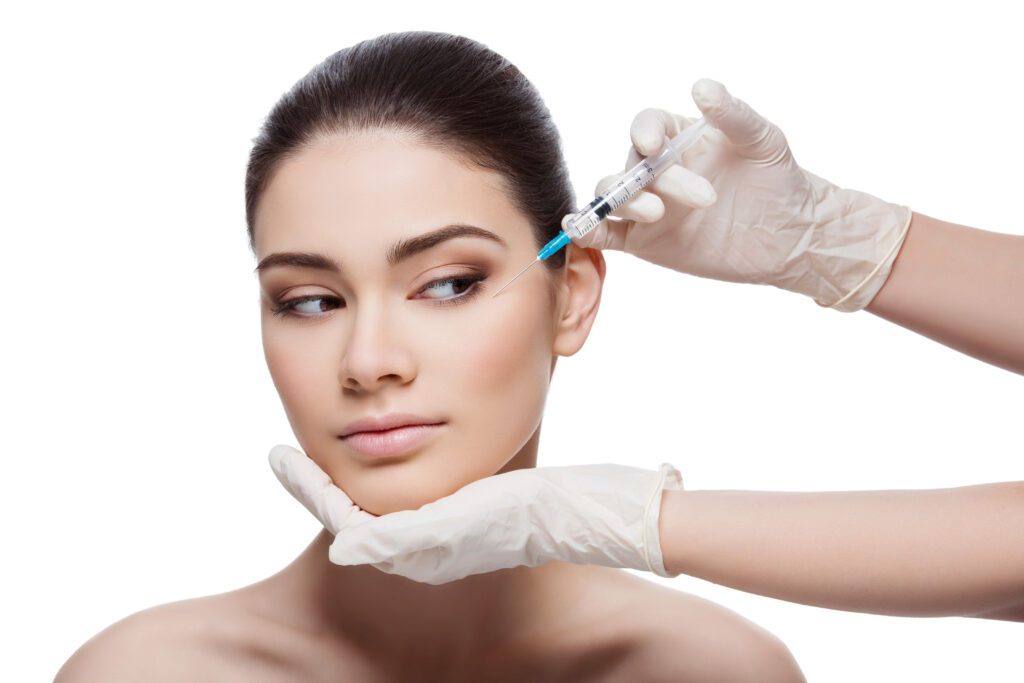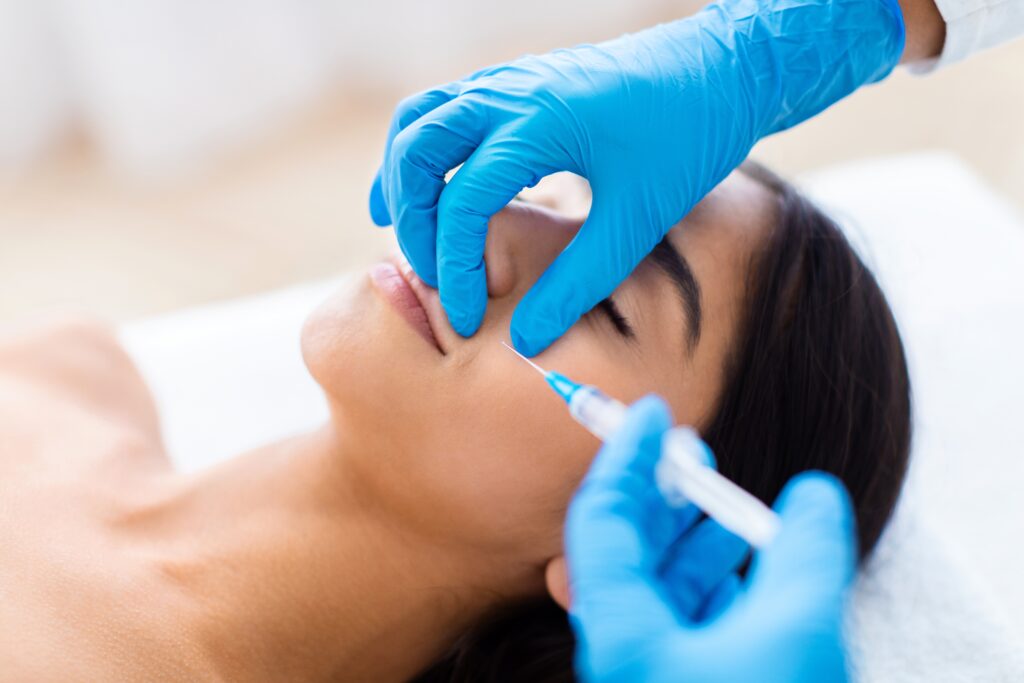A chemical peel is a skin resurfacing technique that helps your body shed the upper damaged layers of skin. This allows the newer, blemish-free skin to appear. You look fresher, healthier, and younger.
How the TCA Chemical Peel Works
There are many different levels of chemical peels. The TCA chemical peel may or may not require a mild sedative to relax you. The chemical preparation does contain an anesthetic, but depending on the strength, you may need additional sedation. Once you are relaxed, your facial cosmetic surgeon prepares your skin for the chemical peel. All dirt and oil is removed. After the skin is prepared, the chemical solution is applied to the skin and left on for the specified period of time. The chemical peel gets to work removing the epidermis and penetrating into the top layers of the dermis.
Have you ever had a sunburn? After a few days, the skin begins to peel off and with the lighter strength peels you may not peel and only flake. Newer, pinker skin appears in place of the sunburned skin. That’s a good example of what you experience after a TCA chemical peel. You might not see the skin peel off, but the dead skin flakes away and leaves the newer skin in its place.
Taking Care of Yourself after a TCA Peel
Once you’re home, you may find your skin feels sore and tight after the chemical peel, much like it would if you had a sunburn. You do need to follow a detailed skin care plan to help your skin remain clean and well moisturized while you heal.
Make sure you do not have any dry patches of skin. If you feel areas on your face that feel dry, apply Aquaphor Healing Ointment with a Q-tip. For the first day, you may also use ice packs to the skin and keep your head elevated to avoid swelling.
The day after the TCA chemical peel, use a soft wash cloth to remove the ointment. Wash your face with a mixture of one cup of distilled water and ½ tablespoon of white vinegar. When you wash, use a circular motion. Rinse your face with more distilled water and pat dry. Do this twice a day for the first two days and up to four times a day after that.For the deeper chemical peel, at five days, switch from the vinegar solution to Cetaphil. Moisturize with Aquaphor ointment for 10 days and then switch to an unscented Cetaphil moisturizer.
Healing Times and Potential Complications
With a 10 percent solution, you usually heel within two or three days. Stronger chemical peels, like those with a 25 percent solution, require more healing time. If you have a solution that is 25 to 35 percent, plan for the recovery to take a week or two.
Most people have no problems with a chemical peel. A small percentage may develop blisters or cold sores. Some also experience infections, scarring, skin allergies, and whiteheads following a TCA chemical peel. If you have a history of cold sores it is important to share this with your physician. You may want to take Valtrex prophylactically.
View before and after pictures of TCA chemical peels. The results are amazing. Do you want to regain that fresh, younger look too? Dr. Edwin Williams is a board certified facial plastic and reconstructive surgeon in New York. He is also board certified in otolaryngology. To schedule a chemical peel with the New York facial plastic surgeon, call 1-800-742-2927. With offices in Albany and Manhattan, you’ll have no problems finding a convenient location.
Recent Posts

Reversing Smoking Damage to Your Skin
Smoking can cause significant skin damage, affecting both overall skin health and its appearance. However, smoking damage can be severe, but there are ways to reverse skin damage caused by…

Balancing Holistic Practices with Cosmetic Treatments
A holistic approach to beauty, including focusing on lifestyle, nutrition, and mental well-being, contributes to skin health as well as general healthiness. Combining holistic practices like these with the non-surgical…

Xeomin vs. Dysport vs. Botox Injections
Xeomin®, Dysport®, and Botox® are all injectable treatments that belong to a class of medications called neuromodulators that use the same main ingredient, botulinum toxin type A. When used for…

A Complete Guide to the Cosmetic Treatment Process: Start to Finish
Non-surgical cosmetic treatments are a great way to revive your look in a safe and effective manner, without the risks associated with surgery. Since 1999, The Rejuva Center at Williams…
